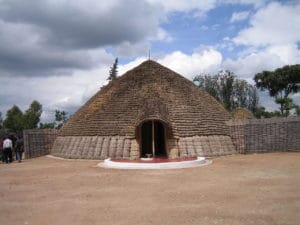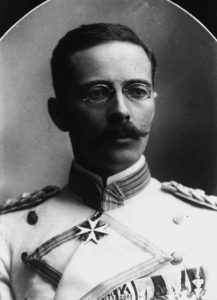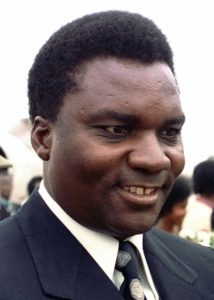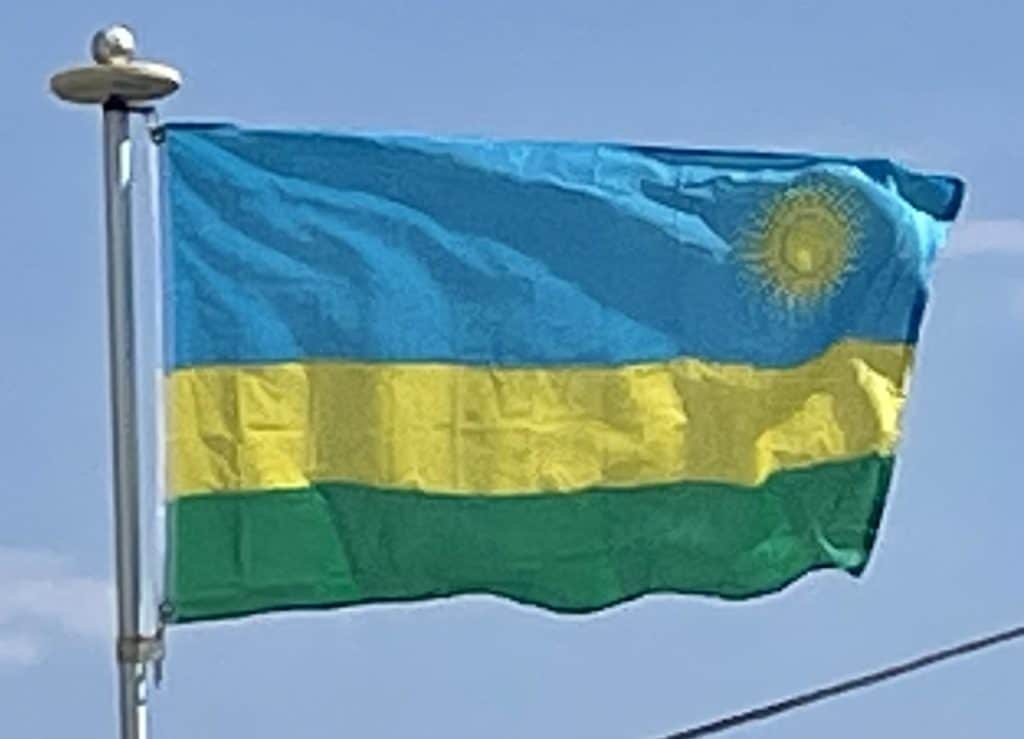
The Berlin Conference of 1884 assigned the territory to Germany as part of German East Africa, marking the beginning of the colonial era. The explorer Gustav Adolf von Götzen was the first European to significantly explore the country in 1894; he crossed from the south-east to Lake Kivu and met the king. The Germans did not significantly alter the social structure of the country, but exerted influence by supporting the king and the existing hierarchy and delegating power to local chiefs. Belgian forces took control of Rwanda and Burundi in 1916, during World War I, beginning a period of more direct colonial rule. Belgium ruled both Rwanda and Burundi as a League of Nations mandate called Ruanda-Urundi. The Belgians also simplified and centralized the power structure, and introduced large-scale projects in education, health, public works, and agricultural supervision, including new crops and improved agricultural techniques to try to reduce the incidence of famine. Both the Germans and the Belgians promoted Tutsi supremacy, considering the Hutu and Tutsi different races. In 1935, Belgium introduced identity cards labelling each individual as either Tutsi, Hutu, Twa or Naturalised. While it had previously been possible for particularly wealthy Hutu to become honorary Tutsi, the identity cards prevented any further movement between the classes.

Belgium continued to rule Ruanda-Urundi (of which Rwanda formed the northern part) as a UN Trust Territory after the Second World War, with a mandate to oversee eventual independence. Tensions escalated between the Tutsi, who favored early independence, and the Hutu emancipation movement, culminating in the 1959 Rwandan Revolution: Hutu activists began killing Tutsi and destroying their houses, forcing more than 100,000 people to seek refuge in neighboring countries. In 1961, the suddenly pro-Hutu Belgians held a referendum in which the country voted to abolish the monarchy. Rwanda was separated from Burundi and gained independence on 1 July 1962, which is commemorated as Independence Day, a national holiday. Cycles of violence followed, with exiled Tutsi attacking from neighboring countries and the Hutu retaliating with large-scale slaughter and repression of the Tutsi. In 1973, Juvénal Habyarimana took power in a military coup. Pro-Hutu discrimination continued, but there was greater economic prosperity and a reduced amount of violence against Tutsi. The Twa remained marginalized, and by 1990 were almost entirely forced out of the forests by the government; many became beggars. Rwanda’s population had increased from 1.6 million people in 1934 to 7.1 million in 1989, leading to competition for land.

In 1990, the Rwandan Patriotic Front (RPF), a rebel group composed of nearly 500,000 Tutsi refugees, invaded northern Rwanda from their base in Uganda, initiating the Rwandan Civil War. The group condemned the Hutu-dominated government for failing to democratize and confront the problems facing these refugees. Neither side was able to gain a decisive advantage in the war, but by 1992 it had weakened Habyarimana’s authority; mass demonstrations forced him into a coalition with the domestic opposition and eventually to sign the 1993 Arusha Accords with the RPF. The cease-fire ended on 6 April 1994 when Habyarimana’s plane was shot down near Kigali Airport, killing him. The shooting down of the plane served as the catalyst for the Rwandan genocide, which began within a few hours. Over the course of approximately 100 days, between 500,000 and 1,000,000 Tutsi and politically moderate Hutu were killed in well-planned attacks on the orders of the interim government. Many Twa were also killed, despite not being directly targeted.
